5 December 2024 : Daily Current Affairs
1. Is the caste Census a useful exercise?
(Source – The Hindu, International Edition – Page No. – 10)
| Topic: GS2 – Governance |
| Context |
|
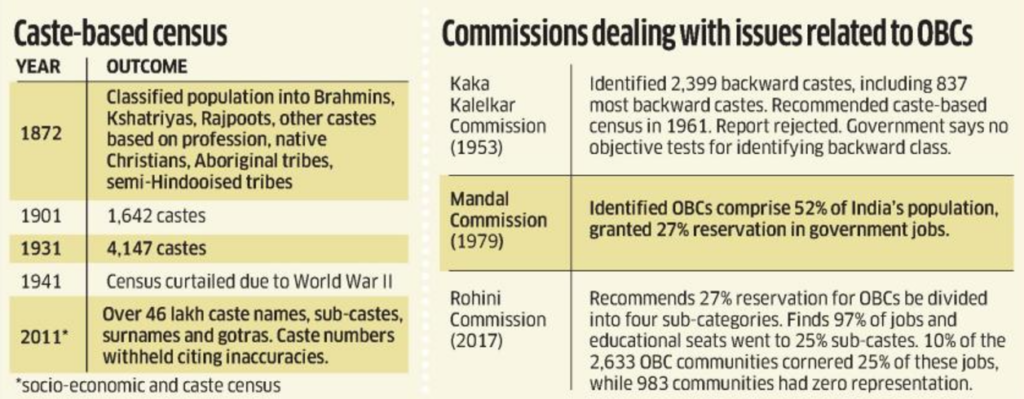
Caste Census: A Political Issue
- The demand for a caste Census has gained momentum, fueled by opposition leaders, NGOs, and even the Rashtriya Swayamsevak Sangh (RSS).
- Proponents argue that a caste Census would provide accurate data on caste populations, which can be used to ensure a proportionate share in government jobs, land, and wealth for each caste.
Historical Background of Caste Census
- The caste Census exercise dates back to the late 19th century, with the first detailed caste Census conducted in 1871-72.
- The 1871 Census collected caste data in regions like North-Western Provinces, Central Provinces, Bengal, and Madras, but the classification of castes was arbitrary and superficial.
- The Census of 1931 identified 4,147 castes, but caste groups often reported different identities across regions.
- These issues persisted in later Census exercises, such as the Socio-Economic and Caste Census (SECC) of 2011, which recorded over 46.7 lakh castes/sub-castes with 8.2 crore acknowledged errors.
- The controversy continues, as seen in the Bihar Census of 2022, which sparked debates over the inclusion of ‘hijra’ and ‘kinnar’ as separate categories.
Challenges in Accessing Accurate Data
- Upward Caste Mobility: Caste claims may be influenced by the perceived prestige of certain groups, leading some communities to claim higher positions in the caste hierarchy for social advantages.
- Downward Caste Mobility: Some respondents may claim lower caste status to gain benefits from reservation policies. This trend is primarily a post-independence phenomenon.
- Caste Misclassification: Similar-sounding castes and surnames can lead to confusion and misclassification. For instance, surnames like ‘Dhanak’ and ‘Dhankia’ in Rajasthan are categorized differently as SC and ST, respectively. Misclassification may also arise due to discomfort among enumerators and respondents discussing caste.
The Problem with Proportional Representation in Reservations
- Proportional representation in reservations, though seemingly fair, is impractical and regressive.
- Proportional representation in reservations means that positions are allocated based on the percentage of each reserved group.
- For example, a group with 27% reservation would get every 4th position in a list of vacancies.
- While this seems fair, applying this to individual castes creates problems. Many castes have very few people, making it hard for them to get reserved positions.
- In some cases, it could take hundreds or even thousands of years for a small caste to get a single reserved vacancy.
- This system is flawed and unfair, as it excludes the smallest and least represented groups.
Conclusion
- The article argues that proportional representation based on caste is not only impractical but also regressive.
- It disproportionately excludes the least populous castes from benefiting from reservations.
- The challenges in accurately classifying castes further undermine the feasibility of a caste Census.
| PYQ: Has caste lost its relevance in understanding the multi-cultural Indian Society? Elaborate your answer with illustrations. (150 words/10m) (UPSC CSE (M) GS-1 2020) |
| Practice Question: Discuss the challenges of implementing a caste Census in India, highlighting issues related to caste misclassification and data accuracy. Evaluate the effectiveness and implications of caste-based proportional reservations in India. (250 Words /15 marks) |
2. Tensions Rise as Sukhbir Singh Badal Faces Attack Amid Akal Takht-Mandated Atonement
(Source: Indian Express; Section: Explained; Page: 09)
| Topic: GS1 – History |
| Context: |
|
Analysis of News:
Akal Takht: Historical Context and Authority
- The Akal Takht, established in 1606 by Guru Hargobind, serves as the supreme temporal authority of Sikhs.
- Symbolizing defiance against Mughal oppression, it became a seat of governance and decision-making for the Sikh community.
- Its doctrines emphasize a balance between temporal (miri) and spiritual (piri) power, asserting the primacy of values over authority.
Role in Sikh Leadership and Religious Discipline
- Post-Guru Gobind Singh’s era, the Akal Takht became central to Sikh gatherings during persecution, evolving into the authority for religious and temporal matters.
- The Jathedar, its head, wields power to summon individuals for adjudication and impose religious penalties, fostering humility and community discipline.
- Historical instances, such as Maharaja Ranjit Singh’s atonement, underscore its moral authority.
Relationship with SGPC and SAD
- The Shiromani Gurdwara Parbandhak Committee (SGPC), formed in 1920, manages Sikh shrines and appoints the Akal Takht Jathedar.
- Historically intertwined with the SAD, the SGPC has been a tool for the Akali Dal to influence Sikh politics.
- This relationship mirrors the dynamic between the RSS and BJP, though critics highlight fundamental differences in ideological and operational objectives.
Political Influence on Akal Takht Decisions
- Over decades, SAD’s dominance over the SGPC has raised concerns about political interference in the Akal Takht’s functioning.
- Key controversies, such as the unilateral pardon of Gurmeet Ram Rahim Singh in 2015, have fueled allegations of SAD influence, compromising the impartiality of the Jathedar and the institution’s credibility.
Conclusion: Challenges in Balancing Authority and Autonomy
- The Akal Takht remains a revered symbol of Sikh identity and authority, but its perceived politicization poses challenges. Ensuring its decisions reflect Sikh values, free from external interference, is critical to preserving its moral and religious authority in the community.
| Important Gurudwaras in Sikhism |
|
Panj Takht: There are five Takhts and these Takhts are five gurudwaras which have a very special significance for the Sikh community. Akal Takhat Sahib means Eternal Throne. It is also part of the Golden Temple complex in Amritsar. Its foundation was laid by Guru Hargobind Ji, the sixth Sikh Guru. Takht Sri Keshgarh Sahib is situated at Anandpur Sahib, Punjab. It is the birthplace of the Khalsa, which was founded by Guru Gobind Singh in 1699. Takht Sri Damdama Sahib is situated in the village of Talwandi Sabo near Bathinda. Guru Gobind Singh stayed here for about a year and compiled the final edition of Guru Granth Sahib, also known as the Damdama Sahib Bir in 1705. Takht Sri Patna Sahib is situated in Patna city which is also the capital of Bihar state. Guru Gobind Singh Ji was born here in 1666 and he spent his early childhood here before moving to Anandpur Sahib. Takht Sri Hazur Sahib in Nanded, Maharashtra. |
| Practice Question: Examine the historical significance and evolving role of the Akal Takht in Sikh religious and political affairs. How has its relationship with the Shiromani Akali Dal (SAD) and the SGPC impacted its authority and impartiality? (250 words/15 m) |
3. Government Scraps Windfall Gains Tax Amid Stabilized Global Oil Prices and Declining Revenues
(Source: Indian Express; Section: Explained; Page: 09)
| Topic: GS3 – Indian Economy |
| Context: |
|
Analysis of News:
What is Windfall Tax?
- A Windfall Tax is a type of tax that is levied on companies or individuals who have unexpectedly and/or dramatically gained large profits, often due to external factors beyond their control.
- It is commonly levied on industries such as oil, gas, and mining.
- The purpose is to capture a portion of the extraordinary profits that companies make and redistribute it for public good.
- It is a strategic measure to promote transparency and fairness and responsible economic practices in the energy industry.
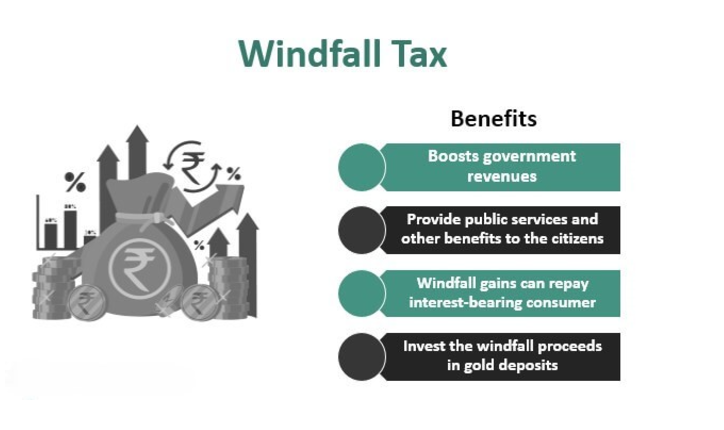
Reasons for Imposition
- Global Price Surge: Crude oil prices exceeded $100 per barrel post-Ukraine invasion, impacting domestic oil prices and incentivizing refiners to export fuels.
- Supply Concerns: Export-driven shortages disrupted domestic fuel supply, necessitating measures to ensure availability.
- Revenue Generation: The tax helped cushion government revenue amid reduced excise duties on petrol and diesel.
Decline in Relevance
- Price Stabilization: Crude oil prices dropped below $75 per barrel, reducing profit margins and the need for the levy.
- Revenue Decline: Collections from the tax fell from ₹25,000 crore in FY23 to ₹6,000 crore in FY25.
- Nil Levies: The tax on petrol, diesel, and ATF exports, as well as domestic crude production, had been progressively reduced to zero by 2024.
Opposition and Industry Concerns
- Profitability Constraints: The tax was criticized for limiting the profitability of oil companies and discouraging production efforts in an import-dependent economy.
- Unpredictable Regime: Frequent revisions created uncertainty, deterring long-term planning and investments.
Impact of Withdrawal
- Industry Reassurance: Scrapping the tax signals a predictable and stable taxation environment, fostering industry confidence.
- Global Alignment: Aligns with stabilized global energy flows and reduced need for intervention.
- Market Dynamics: The move reflects the government’s acknowledgment of changing market realities, emphasizing flexibility in policy responses.
Conclusion
- The withdrawal of the windfall gains tax marks the end of an era shaped by extraordinary global circumstances.
- By responding to evolving market conditions, the government aims to balance domestic energy needs, fiscal stability, and industry growth, signaling adaptability in its policy approach.
| Practice Question: Discuss the rationale behind the imposition of the windfall gains tax in 2022 and analyze the factors that led to its withdrawal in 2024. What implications does this have for India’s oil industry and fiscal policy? (250 words/15 m) |
4. NATIONAL DIGITAL COMMUNICATION POLICY, 2018
(Source – https://pib.gov.in/PressReleseDetail.aspx?PRID=2080648®=3&lang=1 )
| Topic: GS2 – Governance – Government Policies |
| Context |
|

| Key Improvements (2018–2024) |
|
Optical Fiber Network Expansion: Increased from 17.5 lakh km (March 2018) to 41.9 lakh km (October 2024). Base Transceiver Stations (BTS): Grew from 19.8 lakh (2018) to 29.4 lakh (2024). Mobile Connectivity: 6,22,840 of 6,44,131 villages have mobile connectivity as of September 2024. Broadband Subscribers: Doubled from 48 crore (2018) to 94 crore (2024). Data Usage: Increased from 8.32 GB/month (2018) to 21.30 GB/month (2024). Data Tariffs: Reduced from ₹10.91/GB (2018) to ₹8.31/GB (2024). |
Government Initiatives
- BharatNet Program: ₹1,39,579 crore allocated to connect 2.64 lakh Gram Panchayats and approximately 3.8 lakh villages.
- Digital Bharat Nidhi: Provides telecom coverage to uncovered villages.
Satellite Communication Reforms-2022
- Simplified regulations and reduced financial charges for licensees.
- Enabled non-government participation in satellite-based services, connecting 5,474 Gram Panchayats.
Spectrum Management Reforms
- Spectrum auctions since September 2021 allow surrender after 10 years, with no usage charges.
- Encourages spectrum sharing without additional charges, enhancing utilization efficiency.
- Spectrum refarming carried out for 5G services, with a clear assignment methodology outlined in the Telecommunications Act, 2023.
Role of TRAI
- TRAI ensures competition in the telecom sector by issuing regulations to maintain a multi-operator, competitive market.
| Practice Question: Discuss the impact of the National Digital Communication Policy, 2018 on India’s telecom infrastructure and digital empowerment. Highlight the role of government initiatives in promoting connectivity and affordability.(250 Words /15 marks) |
Prelims Facts
1. India backs UN resolution calling on Israel to leave Palestine
(Source – The Hindu, International Edition – Page No. – 1)
| Context |
|
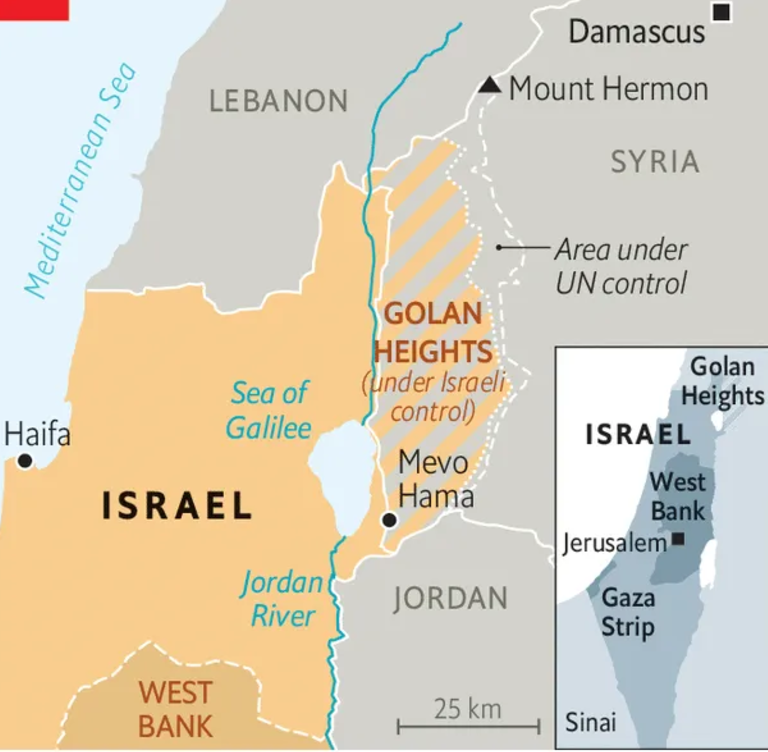
Analysis of the news:
- India voted in favor of the UN General Assembly resolution for Israel’s withdrawal from Palestinian territories occupied since 1967, including East Jerusalem.
- The resolution emphasized achieving a comprehensive, just, and lasting peace in West Asia.
- Titled “Peaceful settlement of the question of Palestine,” the resolution was tabled by Senegal and adopted by 157 nations.
- Eight countries, including the US and Israel, voted against it, while seven abstained.
- The resolution reaffirmed support for the two-state solution based on pre-1967 borders.
- It highlighted the Palestinian right to self-determination and the creation of an independent state.
- India also supported a resolution calling for Israel’s withdrawal from the Syrian Golan Heights to the June 1967 borders.
2. Study flags agroforestry threat to frogs
(Source – The Hindu, International Edition – Page No. – 7)
| Context |
|
Analysis of the news:
- Researchers from NCF-India and BEAG studied the impact of agroforestry on endemic frogs in Maharashtra’s northern Western Ghats.
- The study was conducted in four plateaus: Devi Hasol, Devache Gothane, Gaonkhadi, and Bakale, during the monsoon of 2022.
- Amphibian diversity was lowest in paddy fields, while abundance was least in orchards compared to undisturbed plateaus.
- Endemic frogs like Minervarya cepfi and Minervarya gomantaki were less abundant in modified habitats.
- Minervarya sahyadrensis, a generalist species, was more common in paddy fields.
- Conversion of plateaus into mango and cashew orchards reduces critical frog habitats.
- Researchers recommend frog-friendly agroforestry, retaining water bodies, and providing incentives to landowners.
- The study was funded by On the Edge Conservation, BEAG, The Habitat Trust, and NCF-India.
3. Political turmoil proves investors right on the ‘Korea Discount’
(Source – The Hindu, International Edition – Page No. – 13)
| Context |
|
What does the term “Korea Discount” signify?:
- Korea Discount refers to the phenomenon where stocks in South Korea are priced lower than those in other countries.
- This happens because of factors like ongoing tensions with North Korea and internal political risks.
- South Korean companies, particularly large family-run conglomerates (chaebols), often have a low price-to-book ratio, meaning their stock price is lower compared to their assets.
- The companies in South Korea typically don’t offer high dividends, which discourages investors.
- Investors require a higher risk premium to invest in Korean assets, leading to lower valuations compared to global markets.
4. Turner Prize 2024
(Source: Indian Express; Section: Cover Page; Page: 01)
| Context: |
| Indian-origin Scottish artist Jasleen Kaur has been awarded the prestigious Turner Prize 2024 for her thought-provoking exhibition, Alter Altar. |
Analysis of News:
About Turner Prize
- The Turner Prize, named after the English painter J. M. W. Turner, is an annual prize presented to a British visual artist.
- Between 1991 and 2016, only artists under the age of 50 were eligible (this restriction was removed for the 2017 award).
- The prize is awarded at Tate Britain every other year, with various venues outside of London being used in alternate years.
- Since its beginnings in 1984 it has become the UK’s most publicised art award. The award represents all media.
5. Rajya Sabha Passes Boilers Bill, 2024: Modernizing Safety and Compliance Standards
(Source: Indian Express; Section: In Parliament; Page: 07)
| Context: |
|
Analysis of News:
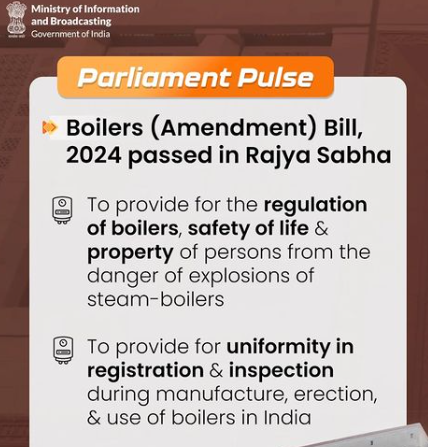
Key Provisions
- Safety Measures: Focuses on the safety of workers and property by mandating qualified personnel for boiler repairs and maintenance.
- Decriminalization: Reduces penalties for non-critical offences, retaining criminal penalties only for four major offences involving serious risks to life and property.
- MSME Sector Benefits: Simplifies compliance and reduces the regulatory burden, aiding micro, small, and medium enterprises (MSMEs) that extensively use boilers.
Implications
- The new bill is expected to enhance industrial safety, reduce administrative hurdles, and promote ease of doing business while ensuring accountability in cases of severe negligence or accidents.
6. Great Lakes Region Faces Intense Lake-Effect Snowfall, over 1.2 Meters Accumulated
(Source: Indian Express; Section: Explained; Page: 09)
| Context: |
|
Analysis of News:
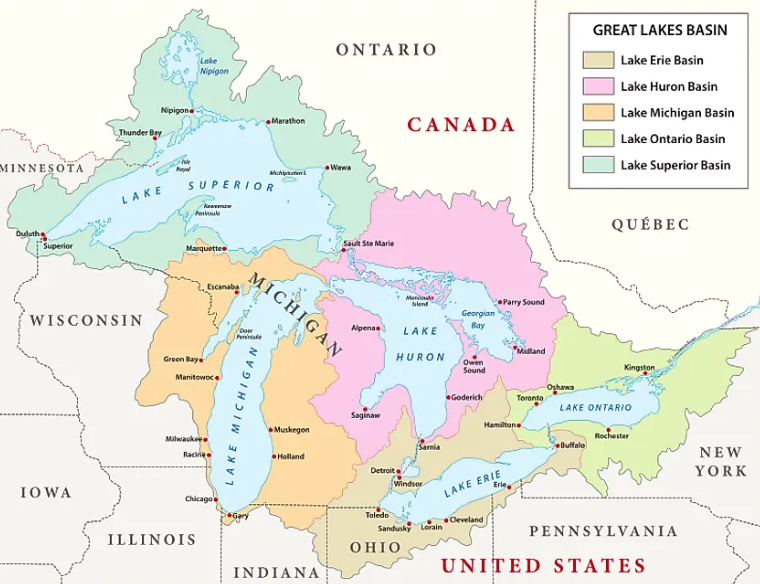
How the Lake Effect is Triggered
- Cold Air Meets Warm Waters: Cold air masses, often from Canada, move over the warmer waters of the Great Lakes.
- Moisture and Rising Air: The warmer lake waters heat the air above, causing it to rise and carry moisture into higher, colder altitudes ideal for snowfall.
- Key Misconception: Most of the moisture in lake-effect snow comes from the air itself, not the lakes, contradicting popular belief.
Impact of Moisture-Laden Air
- Intense Snowfall Rates: Clouds formed by rising moisture can produce snowfall at rates of 5-8 cm per hour or more.
- Localized Impact: The narrow snow bands result in drastic differences in snowfall over short distances.
- Forecast Challenges: Slight changes in wind direction can shift the heaviest snow areas, making precise forecasting difficult.
Lake Effect and the Great Lakes
- Frequent Occurrence: Lake-effect snow is a common feature in regions surrounding the Great Lakes. Typical snowfall ranges from 30-61 cm, though extreme events can occur.
- Historical Instances: In November 2022, western New York faced over 1.8 meters of snow in a single storm, while a 2014 event dumped 2.1 meters over three days, causing widespread disruptions.
7. NASA-ISRO Synthetic Aperture Radar Mission
(Source – https://pib.gov.in/PressReleseDetail.aspx?PRID=2080633®=3&lang=1 )
| Context |
|
NASA-ISRO Synthetic Aperture Radar (NISAR)
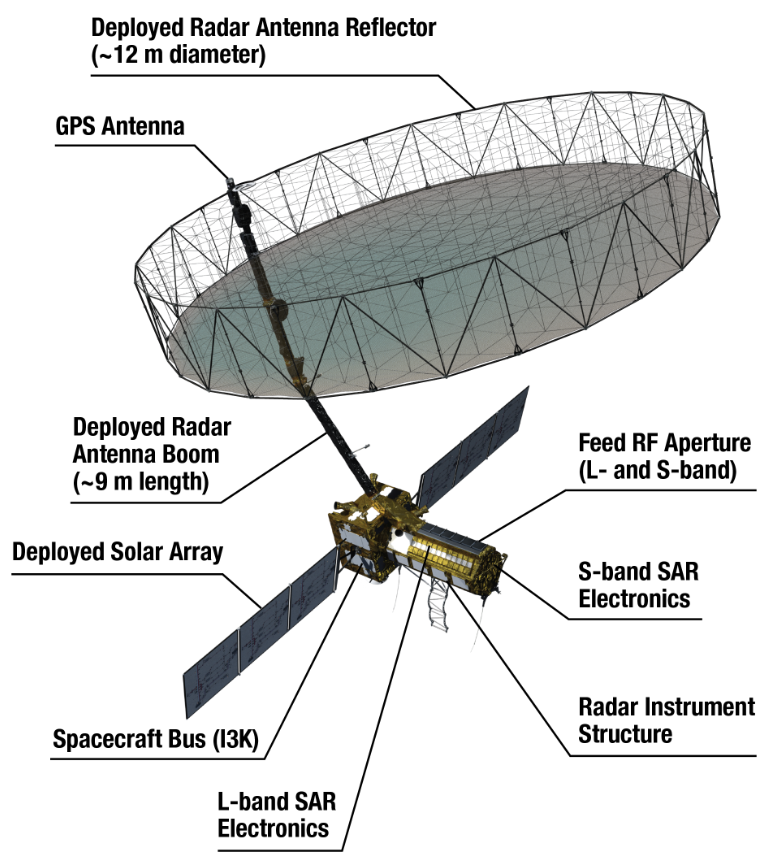
- Joint Mission: NISAR is a satellite project by NASA and ISRO to study Earth from space.
- Main Goal: It will track changes in ecosystems, forests, ice, sea levels, and natural disasters like earthquakes, tsunamis, and landslides.
- Technology Used: It has two radars:
- L-Band (by NASA)
- S-Band (by ISRO)
- Both work together to take clear and wide pictures of the Earth.
- Special Antenna: A 12m-wide foldable antenna will capture data from both radars.
- Launch Plans: NASA and ISRO plans to launch the spacecraft in January 2024.
- Data Collection: It will map the entire Earth every 12 days for three years.
- Important Uses:
- Help monitor forests and carbon levels.
- Study ice melting and sea level changes.
- Track oil spills and coastal erosion.
- Testing Phases: After launch, the systems will be tested for 90 days before starting full operations.
- Global Impact: NISAR will provide valuable data to improve disaster response, climate studies, and ecosystem management.
| Practice Question: Discuss the significance of the NASA-ISRO Synthetic Aperture Radar (NISAR) mission in addressing global environmental challenges and disaster management. (150 Words /10 marks) |
8. Pradhan Mantri Anusuchit Jaati Abhyuday Yojana (PM-AJAY) Scheme
(Source – https://pib.gov.in/PressReleseDetail.aspx?PRID=2080566®=3&lang=1 )
| Context |
|
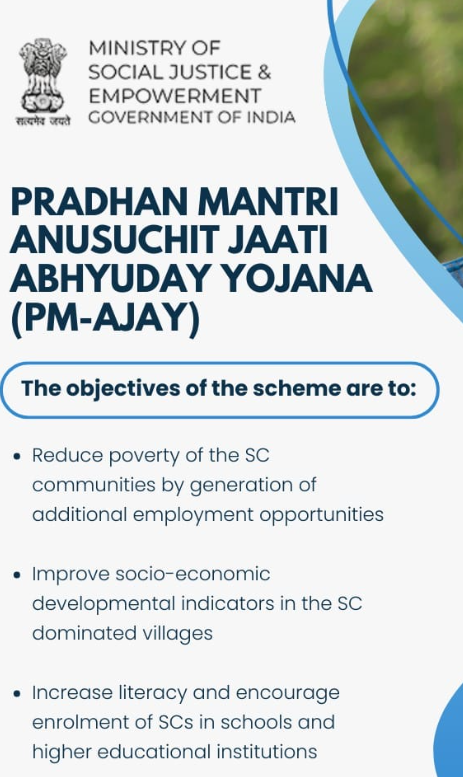
Pradhan Mantri Anusuchit Jaati Abhyuday Yojana (PM-AJAY)
- Launch Year: PM-AJAY is a Centrally Sponsored Scheme implemented since 2021-22.
- Ministry: Ministry of Social Justice and Empowerment
- Components:
- Adarsh Gram: Focus on improving socio-economic indicators in SC-dominated villages.
- Grants-in-Aid: Support for district/state-level projects for the socio-economic betterment of Scheduled Caste (SC) communities.
- Hostel Component: Provision of residential facilities to promote education for SC students.
Objectives:
- Infrastructure Development: Ensure adequate infrastructure and essential services in SC-dominated villages.
- Poverty Reduction: Generate employment opportunities through skill development and income-generating initiatives.
- Educational Support: Encourage SC student enrolment in schools and higher education by providing residential facilities, particularly in aspirational districts and SC-dominated blocks.
Achievements (2021-2024):
- Hostel Component:
- Hostels Sanctioned: 46 hostels.
- Beneficiaries: 5,185 SC students.
- Funding Released: ₹126.30 crores.
The scheme aims to empower SC communities by addressing socio-economic challenges and promoting education through targeted interventions.
9. Various schemes implemented by Ministry of Minority Affairs across the country for socio-economic and educational empowerment of minorities
(Source – https://pib.gov.in/PressReleseDetail.aspx?PRID=2080540®=3&lang=1 )
| Context |
|
Schemes for Minority Communities
1. Nai Manzil Scheme
- Launched in 2015 for minority youth without formal school certificates.
- Combines formal education (Class VIII or X) and skill training.
- Trained 98,712 beneficiaries since inception.
2. USTTAD Scheme
- Started in 2015 to upgrade traditional skills of master craftsmen/artisans.
- Trained 21,611 beneficiaries to date.
3. PM VIKAS Scheme
- Flagship scheme launched in 2024, converging five schemes: Nai Manzil, USTTAD, Seekho Aur Kamao, Nai Roshni, and Hamari Dharohar.
- Focuses on skill development, entrepreneurship, women leadership, and education support.
4. Educational Empowerment Schemes
- Pre-Matric Scholarship: For minority students in classes I-X.
- Post-Matric Scholarship: For higher secondary and collegiate students.
- Merit-cum-Means Scholarship: For professional and technical courses.
5. Employment Schemes
- NMDFC Loans: Concessional loans for self-employment and education.
6. Infrastructure Development
- Pradhan Mantri Jan Vikas Karyakram: Builds health, skill, and community infrastructure in minority areas.
7. Special Scheme
- Jiyo Parsi: Addresses declining Parsi population in India.




